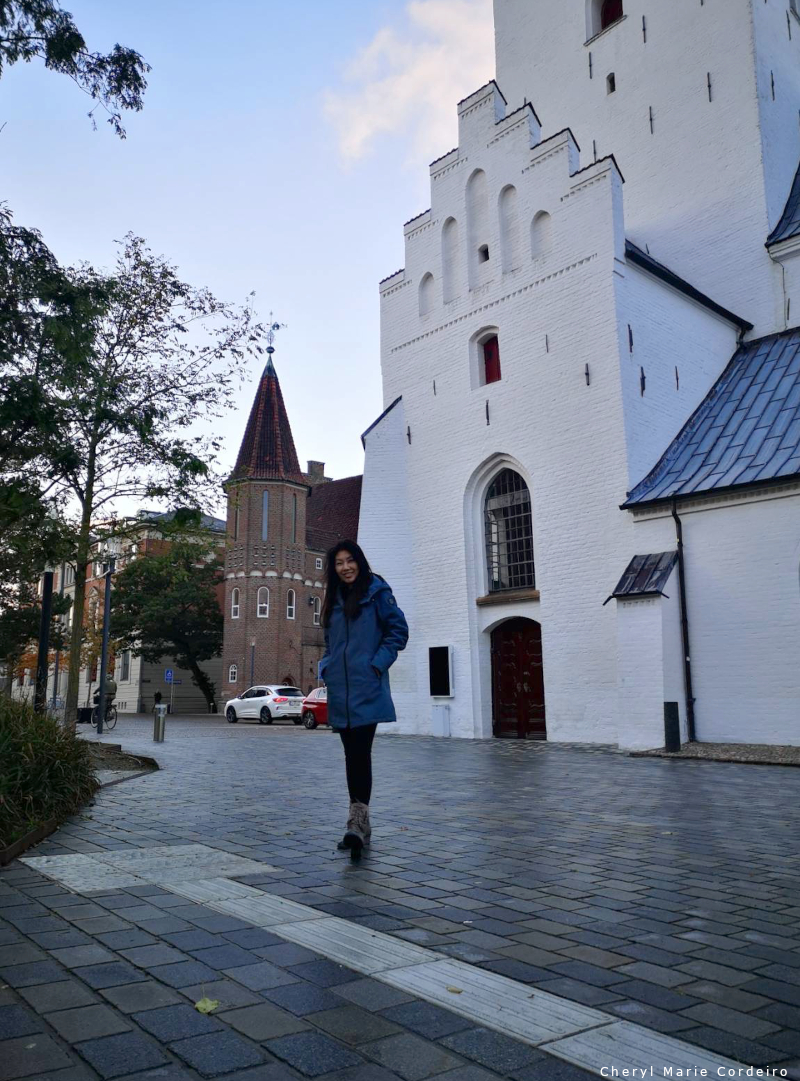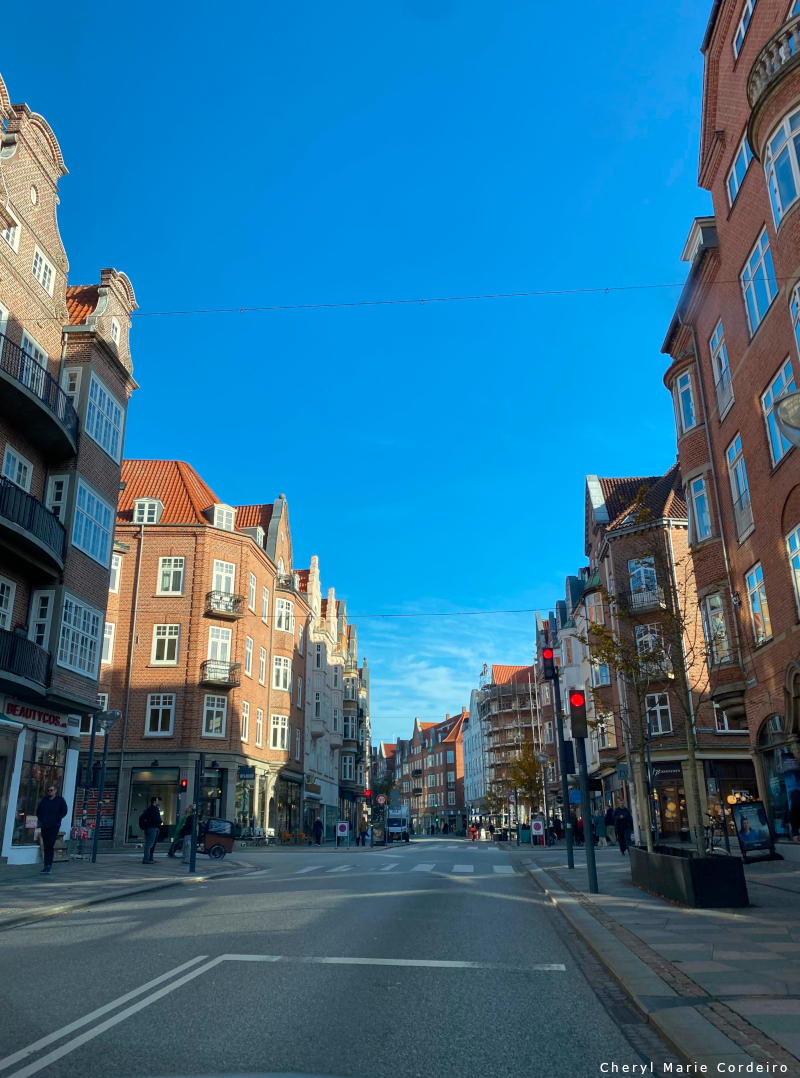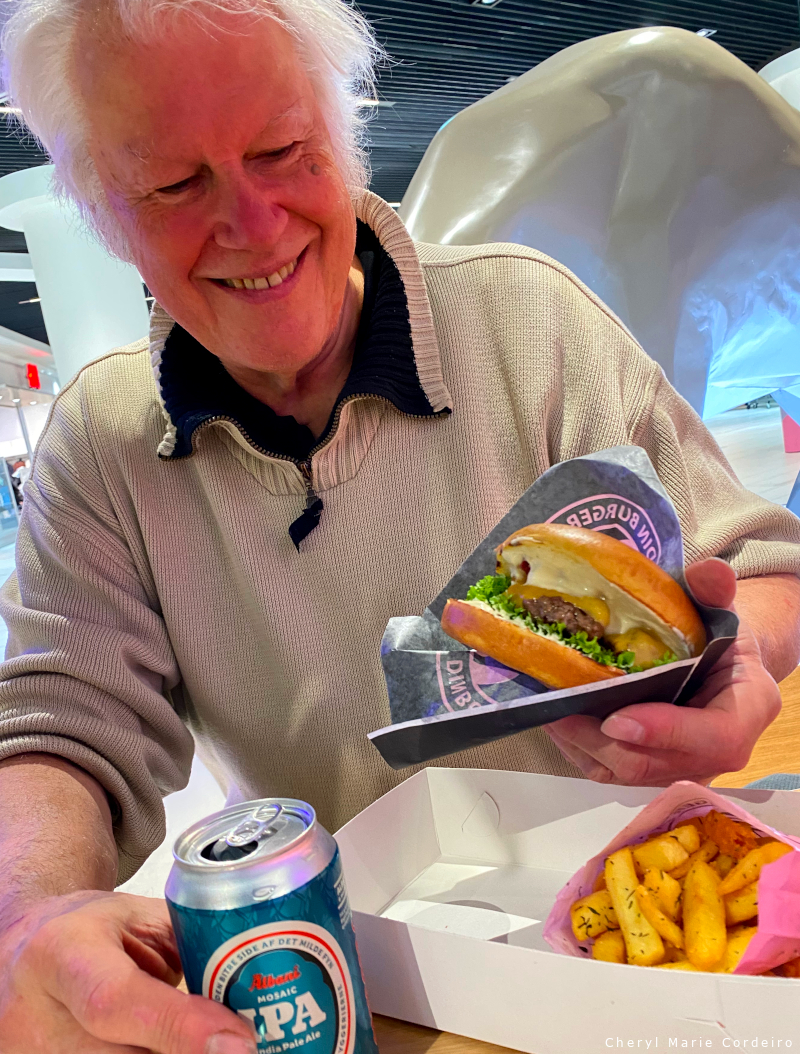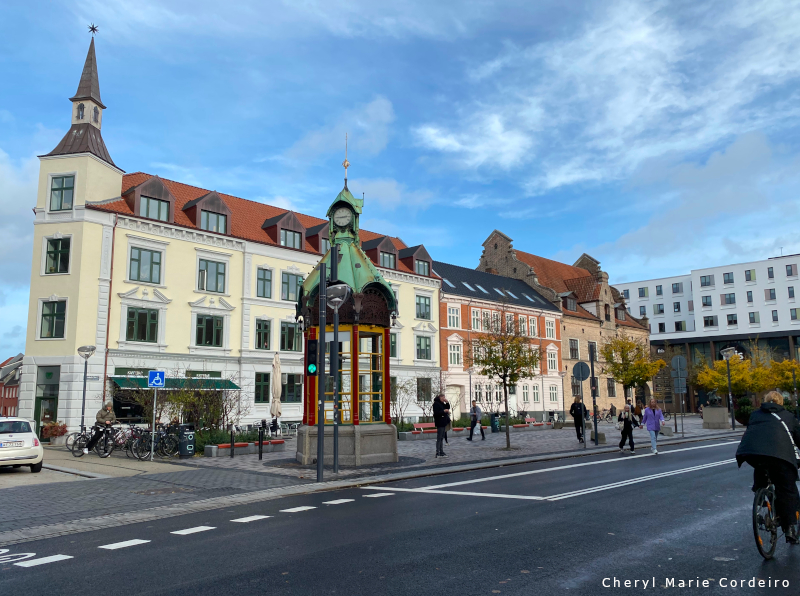
On the grounds of Budolfi Church (Budolfi Kirke) in Aalborg, Denmark.
Text & Photo © CM Cordeiro & , JE Nilsson 2024
Aalborg’s Allure: Sustainable Travel and Culinary Delights by the Fjord
There’s something innately soothing about the sea—a powerful calm that washes over you as you set sail on an adventure. Starting from Gothenburg, Sweden, the journey to Aalborg, Denmark, began with an early morning ferry ride that promised not just transit, but an experience. The soft lapping of waves against the hull, the crisp, salty breeze, and the horizon stretching infinitely under the golden glow of sunrise set the perfect tone for the trip ahead.
The Journey Across the Sea
Boarding the ferry was seamless, with friendly crew members greeting passengers as we embarked. The ferry was equipped with all the comforts one could wish for: cozy seating areas, a café serving freshly brewed coffee, and panoramic windows to take in the seascape. As we sailed through the Kattegat Sea, the gentle motion of the boat and the occasional calls of seagulls made for a serene atmosphere that encouraged us to unwind. The onboard restaurant offered a hearty Scandinavian breakfast—think warm pastries, smoked salmon, and scrambled eggs—perfect fuel for the day ahead.
Arrival in Aalborg: A Blend of Tradition and Vibrance
After a few hours on the water, the port city of Aalborg came into view. Nestled on the Limfjord, Aalborg is a blend of historical charm and contemporary energy. As we disembarked and ventured into the city, cobblestone streets and half-timbered houses welcomed us, hinting at Aalborg’s rich past as an important Viking settlement.
The story of Aalborg Monastery dates back to the 1400s. At that time, Aalborg, located at the natural crossing point over the Limfjord, had grown into a very busy trading town. The fjord was alive with herring when, in 1430, Erik of Pomerania granted sole trading rights to the city. This was the basis of Aalborg’s prosperity during the Catholic era, when trade with Lifland, Danzig, and Lübeck flourished. Folk from the surrounding countryside flocked into the city for work and to share in the prosperity that seemed to benefit all of North Jutland.
One of the highlights of visiting Aalborg is undoubtedly Jomfru Ane Gade, affectionately known as ‘The Party Street.’ This lively thoroughfare is legendary across Denmark and beyond for its nightlife. Lined with bars, clubs, and vibrant eateries, Jomfru Ane Gade is where the city’s youthful spirit comes alive. By day, it’s a pleasant street with cozy cafés and boutiques; by night, it’s a raucous corridor filled with laughter, music, and the clinking of glasses. Yet, amid the excitement, there is a subtle undertone of Denmark’s commitment to sustainability. The city ensures that tourism development is mindful of its cultural heritage and environmental impact, echoing broader national policies that prioritize sustainable growth.
Danish Culinary Delights with a Sustainable Touch
No travel experience is complete without sampling the local cuisine, and Denmark is renowned for its culinary prowess. While an ideal Danish dinner might include a dish of stegt flæsk, crispy pork belly served with boiled potatoes and a rich parsley sauce, we found ourselves experiencing something different yet familiar—a food court. Growing up in Singapore, food courts are a staple, and discovering this concept in Denmark was both nostalgic and welcoming.
The Danish food court was neatly arranged, offering an array of international cuisine. Italian, Thai, Mexican, and Japanese dishes lined the menu, catering to diverse tastes. We settled for a hearty cheeseburger—not the most inventive choice, but satisfying nonetheless. The experience was more than just about the food; it was about the ambiance of shared spaces, communal dining, and the lively chatter of people from all walks of life enjoying their meals. It was a reminder that dining, even in its simplest form, can bring comfort and connection.
The Atmosphere of Aalborg: A Model for Sustainable Tourism
The air in Aalborg carries a unique blend of tradition and modernity. As we strolled along the waterfront, we noticed families enjoying picnics on the grassy areas, street musicians filling the air with melodic tunes, and friends gathering at cafés to share stories over coffee. Despite its reputation for being a party town, Aalborg has a welcoming warmth during the day—a sense of community and contentment that is quintessentially Danish.
What sets Aalborg apart is its commitment to sustainable tourism. The city’s development is carefully planned to preserve its historical sites and natural landscapes while supporting modern attractions. The local government’s policies emphasize eco-friendly practices, ensuring that growth does not come at the expense of the environment. Walking through Aalborg, we could feel how this balance is achieved: the echoes of its Viking past intertwine seamlessly with contemporary life, while sustainable urban planning ensures green spaces are maintained and public transportation is efficient and clean.
Historical landmarks such as the Aalborg Castle and the picturesque Budolfi Cathedral coexist harmoniously with avant-garde art installations and modern architectural marvels. This conscious blend showcases a commitment to both preserving the past and embracing the future—a hallmark of sustainable tourism.
A Lasting Impression
From the moment we boarded the ferry in Gothenburg to our exploration of Aalborg’s vibrant streets and serene waterfront, this trip was an unforgettable blend of relaxation, excitement, and cultural discovery. Aalborg’s party street, Jomfru Ane Gade, offered a lively taste of Danish nightlife, while its food scene and welcoming atmosphere showcased the nation’s rich tradition and commitment to sustainability.
Whether you’re looking for a night of revelry or a quiet day by the fjord, Aalborg captures the heart with its contrasts and leaves you with memories that linger long after the journey home. And throughout it all, Denmark’s dedication to sustainable tourism ensures that your visit not only delights but also contributes positively to the community and the environment.





